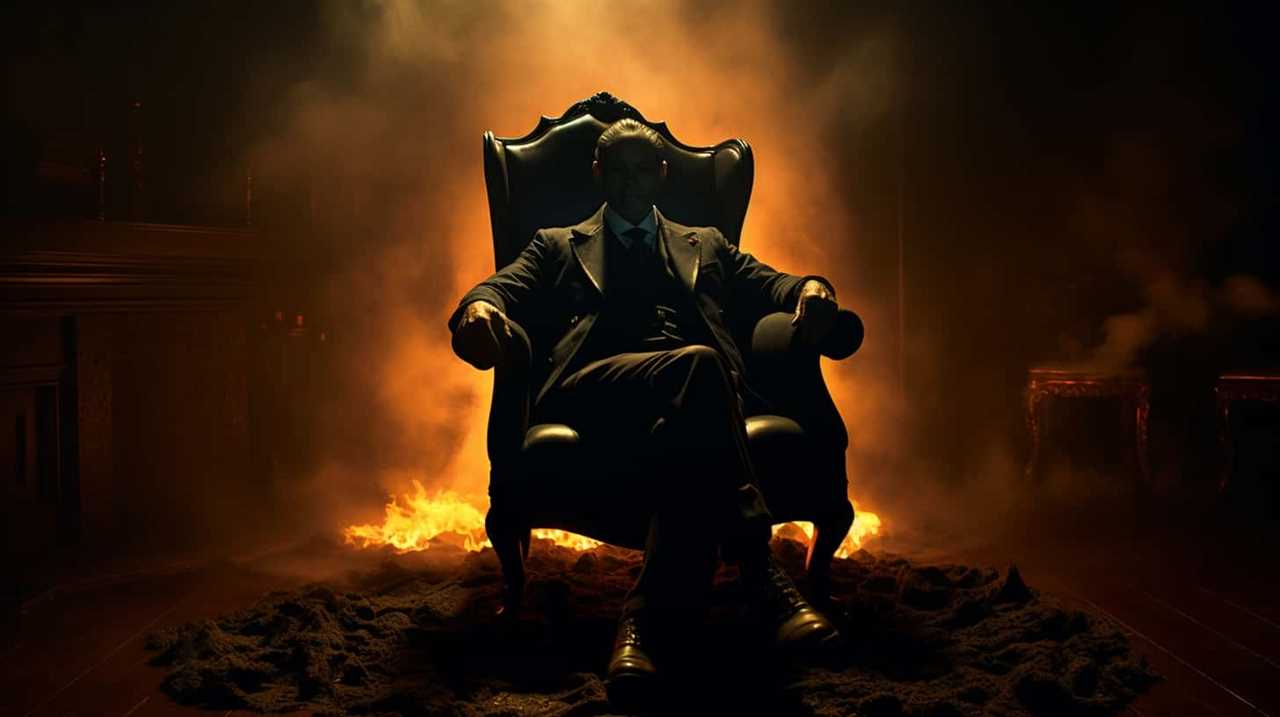Get ready to be amazed by our electrifying selection of the top 11 bold one-liners from iconic action films.
Did you know that these unforgettable lines have become battle cries for those who seek true liberation? It’s true!
From the classic ‘I’ll be back’ to the infamous ‘Yippee-ki-yay, motherf****r,’ these rebellious retorts have shaken the foundations of cinematic history.
In this exhilarating list, we will explore the fearless words that have inspired generations to stand up against the status quo.
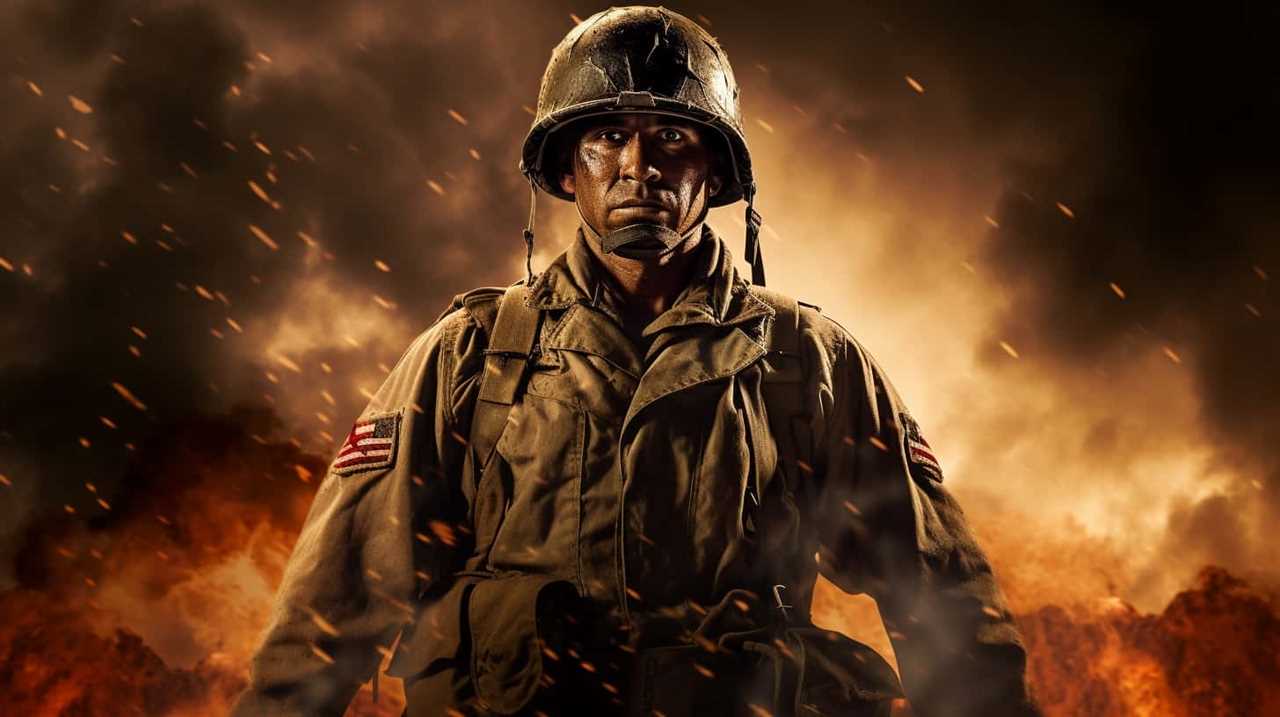
So, fasten your seatbelts and get ready to relish in the most audacious, gut-punching lines that have ignited our rebellious spirits.
Brace yourselves, because we’re about to witness the power of defiance!
Key Takeaways
- Action movie one-liners have become an integral part of our cultural lexicon, creating shared moments of connection and resonating with audiences worldwide.
- Profanity in iconic action movies adds intensity, rebellion, and a sense of liberation, pushing boundaries and challenging societal norms.
- Memorable catchphrases play a vital role in character development, adding depth and creating a sense of familiarity and connection with the audience.
- Ripley’s iconic one-liner in Aliens represents the empowerment of female characters in action movies, challenging gender stereotypes and promoting gender equality.
I’ll Be Back
We can’t talk about iconic action movie one-liners without mentioning the unforgettable line, ‘I’ll be back.’ This line, uttered by Arnold Schwarzenegger’s character in the 1984 film ‘The Terminator,’ has become one of the most recognizable catchphrases in cinematic history. Its cultural significance goes beyond the film itself, as it has permeated popular culture and has been referenced and parodied countless times.
The origins of this catchphrase lie in the film’s script, written by James Cameron. The line was initially intended to be a simple response to a request for information, but Schwarzenegger’s delivery and the context in which it was used transformed it into a powerful and defiant statement. The line perfectly captures the essence of his character, an unstoppable killing machine. Its popularity can be attributed to its memorable delivery, the impact of the film, and Schwarzenegger’s larger-than-life persona.

‘I’ll be back’ hasn’t only become synonymous with the Terminator franchise but has also become a symbol of determination and resilience in popular culture.
Yippee-Ki-Yay, Motherf****R
When it comes to memorable movie catchphrases, few can rival the impact of ‘Yippee-Ki-Yay, Motherf****R’ from the Die Hard franchise. This iconic line, delivered by Bruce Willis’s character John McClane, has become synonymous with defiance and badassery in action films.
Its use of profanity adds to its rebellious nature and amplifies its impact, making it a cultural touchstone that’s instantly recognizable and frequently referenced in popular culture.
The enduring popularity of this catchphrase proves its enduring cultural influence and its ability to captivate audiences for decades.

Memorable Movie Catchphrases
We all love those iconic action movie catchphrases that stick with us long after the credits roll. These memorable catchphrases have a significant impact on audience engagement and play a vital role in character development.
Catchphrases like ‘Yippee-Ki-Yay, Motherf****R’ from the Die Hard series have become synonymous with the tough, resilient nature of the protagonist, John McClane. They not only showcase his defiance and determination in the face of adversity but also add depth to his character by revealing his wit and resourcefulness.
These catchphrases create a sense of familiarity and connection with the audience, making them feel a part of the action and enhancing their overall viewing experience.
The power of these catchphrases can’t be underestimated as they’ve become cultural touchstones that continue to resonate with fans, even years after the movies were released.
![]()
Impact of Profanity Use
The use of profanity, particularly the iconic line ‘Yippee-Ki-Yay, Motherf****R,’ has a profound impact on the defiant and rebellious tone of iconic action movies. Profanity has long been used as a tool to convey a sense of liberation and defiance, and in the context of action movies, it adds an extra layer of intensity and rebellion.
This iconic line, uttered by Bruce Willis in the Die Hard series, has become synonymous with his character’s determination and refusal to back down. It serves as a powerful expression of his defiance against the villains he faces.
Profanity in comedy and music also serves a similar purpose, allowing performers to push boundaries and challenge societal norms. It adds an element of edginess and authenticity, creating a sense of liberation for both the artist and the audience.
Cultural Influence and Recognition
Frequently heard in pop culture and often quoted among fans, the iconic line ‘Yippee-Ki-Yay, Motherf****R’ has achieved widespread recognition and cultural influence. Action movies have had a significant impact on popular culture, and their one-liners have become an integral part of our everyday conversations.

Here are four reasons why these lines have become so influential:
- Memorable catchphrases: Action movie one-liners are catchy and easily memorable. They stick in our minds and become part of our cultural lexicon.
- Instant recognition: When someone quotes an action movie line, we immediately recognize it and often join in, creating a shared moment of connection.
- Symbol of defiance: Action movie one-liners embody a rebellious spirit and empower us to stand up for ourselves in the face of adversity.
- Cultural references: These lines have permeated various forms of media, from music to television shows, further embedding them into our collective consciousness.
The influence of action movies on popular culture can’t be overstated, and their iconic one-liners, like ‘Yippee-Ki-Yay, Motherf****R,’ continue to resonate and inspire audiences worldwide.
Say Hello to My Little Friend
Introducing one of the most memorable and explosive lines in action movie history: ‘Say hello to my little friend!’ This iconic line, spoken by Al Pacino’s character Tony Montana in the film Scarface, has become deeply embedded in pop culture references. But beyond its catchiness, this line also offers a glimpse into the toxic masculinity prevalent in action movies.
Tony Montana’s declaration is a display of power and aggression, asserting dominance over his adversaries. It reflects a societal expectation that men must prove their masculinity through violence and bravado. However, its cultural significance goes beyond its portrayal of toxic masculinity. It also serves as a reminder of the need to challenge and liberate ourselves from these harmful gender stereotypes.

Now, let’s move on to another famous line that epitomizes defiance: ‘Go ahead, make my day.’
Go Ahead, Make My Day
When it comes to memorable movie catchphrases, few are as iconic as Clint Eastwood’s ‘Go ahead, make my day’ from the 1983 film Sudden Impact. This line has become synonymous with tough, no-nonsense characters and has had a lasting impact on popular culture.
It showcases the power of a well-delivered one-liner in defining a character and leaving a lasting impression on audiences.
Memorable Movie Catchphrases
We have compiled a list of the most memorable movie catchphrases from iconic action movies, including the defiant line ‘Go ahead, make my day.’ These catchphrases have had a significant impact on audiences, becoming ingrained in popular culture and forever associated with the characters who uttered them.
![]()
Here are four examples that demonstrate the power and effectiveness of these catchphrases:
- ‘I’ll be back’ – Arnold Schwarzenegger’s Terminator delivered this line with a chilling certainty, leaving audiences on the edge of their seats and eagerly awaiting his return.
- ‘Yippee-ki-yay, motherf***er’ – Bruce Willis’ John McClane in Die Hard epitomized the resilient and irreverent hero, solidifying this catchphrase as a symbol of defiance and determination.
- ‘Say hello to my little friend’ – Al Pacino’s Tony Montana in Scarface introduced audiences to a character who embraced his own dark side, making this line an iconic declaration of power.
- ‘I’m too old for this s**t’ – Danny Glover’s Roger Murtaugh in Lethal Weapon captured the frustration and weariness of a seasoned detective, resonating with audiences who’ve felt overwhelmed by life’s challenges.
These catchphrases not only added depth to the characters and the stories they were a part of but also became rallying cries for audiences seeking liberation from their own struggles.
Impact of Iconic Lines
Often, iconic lines from action movies have a lasting impact on audiences. One such line that continues to resonate is ‘Go ahead, make my day.’ This powerful phrase, uttered by Clint Eastwood’s character Harry Callahan in the 1983 film ‘Sudden Impact,’ has become synonymous with a defiant and unwavering attitude. Its impact on pop culture is undeniable, as it has been quoted, parodied, and referenced in various forms of media ever since.
The lasting legacy of ‘Go ahead, make my day’ lies in its ability to capture the essence of empowerment and liberation, inspiring audiences to stand their ground and face challenges head-on. This iconic line has transcended its original context and become a symbol of strength and resilience in the face of adversity.

Transitioning into the subsequent section about ‘I’m too old for this s**t,’ let’s explore another memorable catchphrase that has left a lasting impression on action movie fans.
I’m Too Old for This S**T
Experiencing the relentless chaos and danger of our profession, age becomes an undeniable obstacle to overcome in this line of work. However, there’s cultural significance in the portrayal of seasoned action heroes who declare, ‘I’m too old for this shit.’ These characters redefine the boundaries of age and action, proving that experience can triumph over physical limitations.
Here are four reasons why this defiant one-liner resonates with audiences:
- Relatability: As we age, we often feel the weight of our years and question our abilities. Seeing older characters confront their limitations and push past them empowers us to do the same.
- Authenticity: This line acknowledges the physical toll that action-packed careers take on individuals. It adds a layer of realism to these larger-than-life characters, making them more relatable.
- Humor: By using humor, the line helps alleviate tension and adds a touch of self-awareness. It reminds us not to take ourselves too seriously, even in the face of danger.
- Liberation: The declaration, ‘I’m too old for this shit,’ challenges societal expectations and stereotypes about aging. It celebrates the freedom to defy limitations and pursue our passions, regardless of age.
I’m Gonna Make Him an Offer He Can’t Refuse
In iconic action movies, we find ourselves immersed in a world where we’re presented with a character who, at a specific moment, uses the line ‘I’m gonna make him an offer he can’t refuse.’ This line, spoken with authority and conviction, has had a profound impact on the portrayal of violence in films and its influence on pop culture can’t be denied.
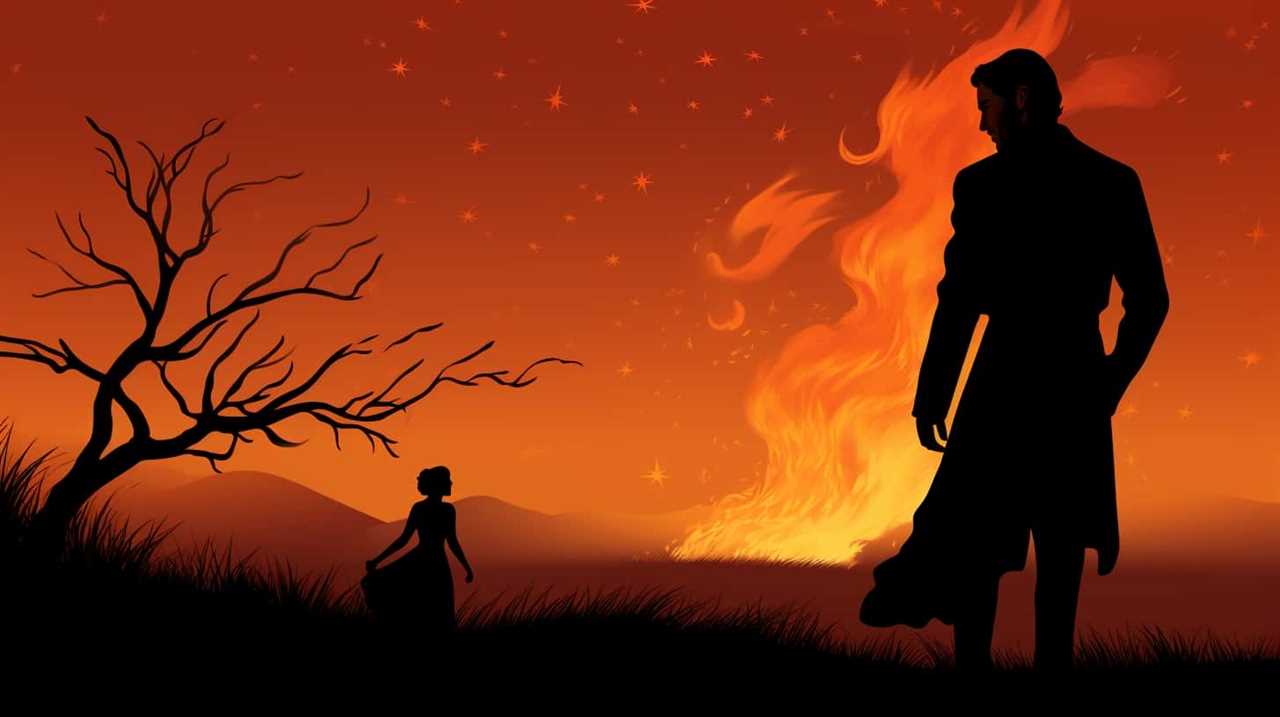
The use of this line signifies a moment of power and control, where a character asserts their dominance over another. It suggests that the character is willing to use any means necessary to achieve their goals, even resorting to threats and violence if required. This portrayal of violence has become a staple in the action genre, perpetuating the idea that power can be obtained through force.
Furthermore, this line has seeped into popular culture, becoming a widely recognized catchphrase. It has been referenced and parodied in various forms of media, further cementing its place in the collective consciousness. The impact of this line on pop culture showcases the enduring appeal of the action genre and its ability to captivate audiences with its bold and defiant one-liners.
There’s No Place Like Home
We can all relate to the sentiment that ‘home is where the heart is’ in iconic action movies. Whether it’s a physical place or a sense of belonging, the idea of home holds great cultural significance and often serves as a catalyst for personal growth.
Here are four reasons why the notion of ‘there’s no place like home’ resonates with audiences:
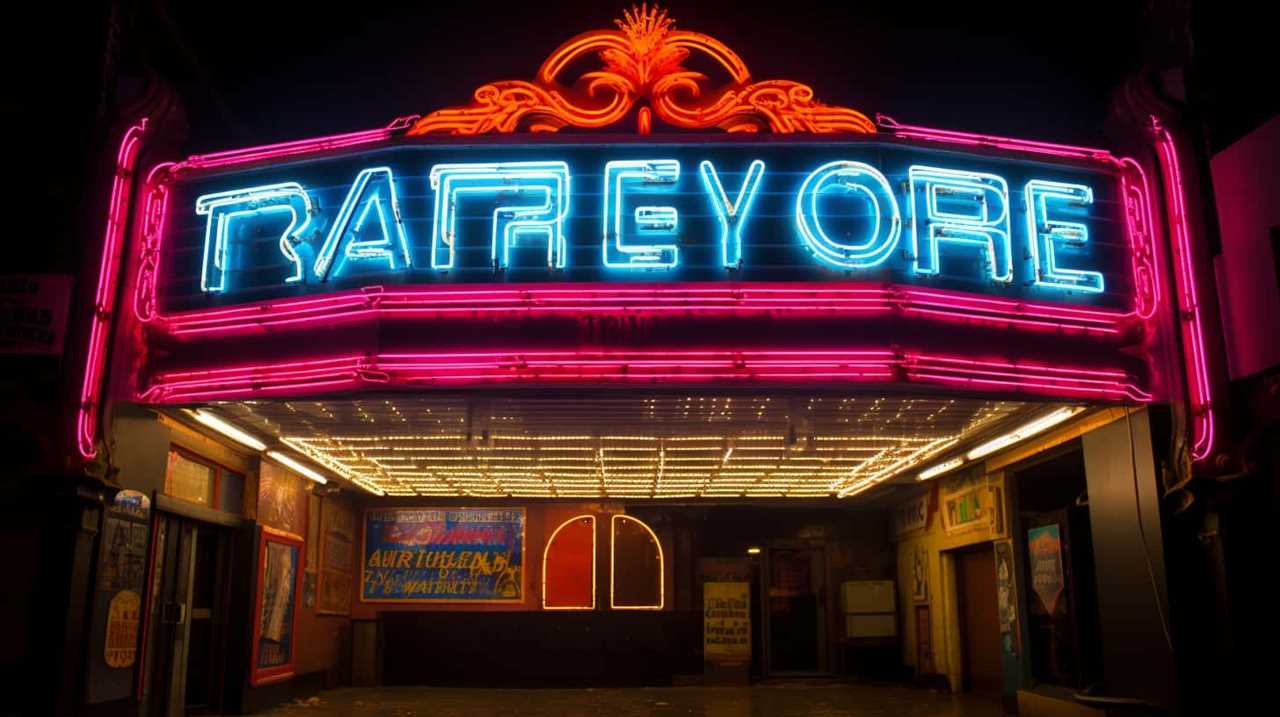
- Familiarity breeds comfort: Returning to a familiar environment can provide a sense of safety and security, allowing characters to regroup and strategize.
- Reconnecting with loved ones: Coming home often means reuniting with family or friends, offering characters a chance to find solace and emotional support.
- Rediscovering one’s identity: Homecoming can be a transformative experience, prompting characters to reflect on their roots and ultimately find themselves.
- Finding closure: Sometimes, going back home is necessary in order to resolve past conflicts or unfinished business, allowing characters to move forward with their lives.
The idea of home serves as a powerful motif in action movies, reminding us of the importance of our roots and the role they play in shaping our journeys.
I’m Your Huckleberry
One-liners like ‘I’m your huckleberry’ have become iconic in action movies, showcasing the confident and defiant nature of the characters. This particular phrase, uttered by Val Kilmer’s character Doc Holliday in the 1993 film "Tombstone," has gained immense cultural significance and continues to be celebrated by fans of the genre. But what is the historical origin of this memorable line?
The phrase "I’m your huckleberry" dates back to the late 19th century, originating in the American West. It was used to convey one’s readiness to take on a challenge or opponent. In the context of the film, Doc Holliday’s use of the line demonstrates his unwavering confidence and willingness to confront any adversary.
To further understand the impact and popularity of this one-liner, let’s take a closer look at its cultural significance:

| Cultural Significance | Historical Origins |
|---|---|
| Iconic portrayal of confidence and defiance | Originates from the American West in the late 19th century |
| Showcases the character’s readiness for a challenge | Popularized by Val Kilmer’s portrayal of Doc Holliday in "Tombstone" |
| Celebrated by fans of action movies | Represents the spirit of the Wild West and the fearless nature of its inhabitants |
The "I’m your huckleberry" one-liner has transcended its historical origins, becoming a symbol of empowerment and liberation for those who seek to defy obstacles and embrace their inner strength. Its timeless appeal continues to inspire and resonate with audiences, cementing its place in the pantheon of iconic action movie quotes.
I Have Come Here to Chew Bubblegum and Kick Ass…And I’m All Out of Bubblegum
Arriving with a purpose, ready to take action and lacking any bubblegum, the iconic line ‘I Have Come Here to Chew Bubblegum and Kick Ass…And I’m All Out of Bubblegum’ has become a memorable expression of determination and defiance in action movies. This line, spoken by Roddy Piper in the 1988 film ‘They Live,’ has had a profound cultural significance and impact on audience perceptions. Here’s why:
- Memorable catchphrase: The line’s catchy nature and boldness make it easily quotable and instantly recognizable.
- Symbol of rebellion: The line embodies a rebellious spirit and a refusal to conform to societal norms, resonating with those who desire liberation from oppressive systems.
- Empowerment through action: It inspires individuals to take charge of their lives and stand up against injustice, empowering them to kick ass and fight for what they believe in.
- Challenge to the status quo: By highlighting the need to chew bubblegum and kick ass, the line challenges the complacency and conformity often seen in society, encouraging viewers to question and resist.
With its cultural significance and impact on audience perceptions, ‘I Have Come Here to Chew Bubblegum and Kick Ass…And I’m All Out of Bubblegum’ continues to inspire and motivate individuals to embrace their inner defiance and take action for change.
Transition: Just as ‘I Have Come Here to Chew Bubblegum and Kick Ass…And I’m All Out of Bubblegum’ became a rallying cry for rebellion, another iconic line, ‘I’m the king of the world,’ has left an indelible mark on the world of cinema.

I’m the King of the World
When it comes to memorable movie catchphrases, few are as iconic as ‘I’m the King of the World.’ This line, famously shouted by Leonardo DiCaprio’s character in the film Titanic, has become a cultural reference in its own right.
It perfectly captures the sense of triumph and exuberance that can be found in many action movies, where characters defy the odds and assert their dominance.
These defiant one-liners have a lasting impact on audiences and contribute to the enduring popularity of these films.
Memorable Movie Catchphrases
In our exploration of memorable movie catchphrases, we can’t ignore the iconic line ‘I’m the King of the World’ from a certain action-packed film. This catchphrase has had a significant impact on popular culture, becoming synonymous with triumph and exuberance. It has transcended the boundaries of the film it originated from and has been referenced and parodied in various forms of media.

Here are four reasons why this catchphrase has become so memorable:
- The Power of Confidence: The line encapsulates the feeling of invincibility and self-assurance that resonates with audiences, inspiring them to embrace their own inner strength and conquer their obstacles.
- Memorable Delivery: The line was delivered with such conviction by the film’s lead actor that it became etched in the minds of viewers, solidifying its place in cinematic history.
- Emotional Connection: The catchphrase evokes a sense of joy and empowerment, allowing audiences to momentarily escape reality and experience the thrill of victory.
- Pop Culture Reference: This catchphrase has been parodied and referenced in countless comedy films, highlighting its enduring popularity and cultural significance.
The ‘I’m the King of the World’ catchphrase will forever be remembered as a powerful expression of triumph, reminding us that we too have the potential to conquer our own worlds.
Impact of Iconic Lines
From the moment it burst onto the screen, the defiant one-liner ‘I’m the King of the World’ has solidified its place in cinematic history, captivating audiences with its triumphant declaration.
This iconic line, delivered by Leonardo DiCaprio’s character Jack Dawson in the film ‘Titanic,’ has had a profound impact on audiences around the world. It resonates with viewers, empowering them to embrace their own sense of self-worth and ambition.
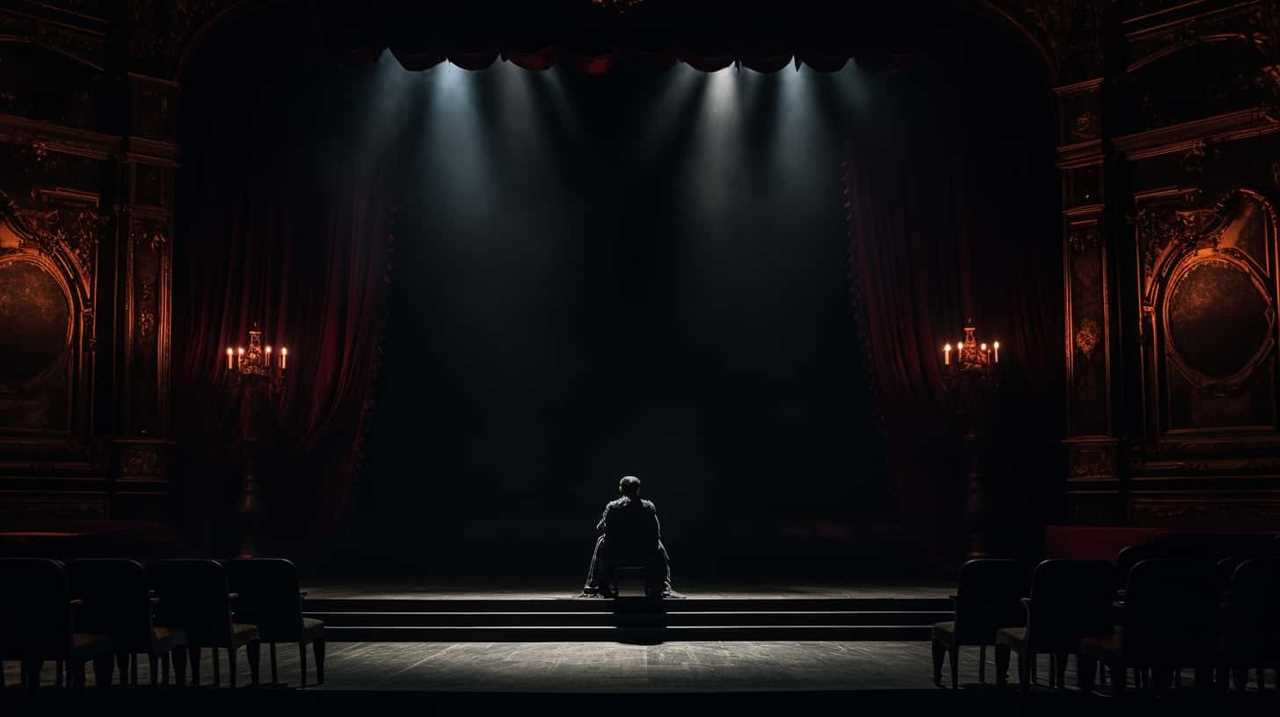
The line’s influence on pop culture is undeniable, as it has been referenced and parodied in countless films and television shows. It has become a symbol of confidence and determination, inspiring individuals to rise above challenges and assert their own greatness.
With its enduring popularity, ‘I’m the King of the World’ continues to leave a lasting impression on viewers, reminding us of the power of a well-crafted one-liner.
Transitioning into the subsequent section about ‘cultural references in films,’ it’s fascinating to explore how this iconic line has been utilized and interpreted in different contexts.
Cultural References in Films
As we delve into the realm of cultural references in films, let’s explore the impact and interpretations of the defiant one-liner ‘I’m the King of the World’ from iconic action movies. This line, famously delivered by Leonardo DiCaprio’s character in the film Titanic, has become a cultural phenomenon, symbolizing a moment of victory and empowerment.
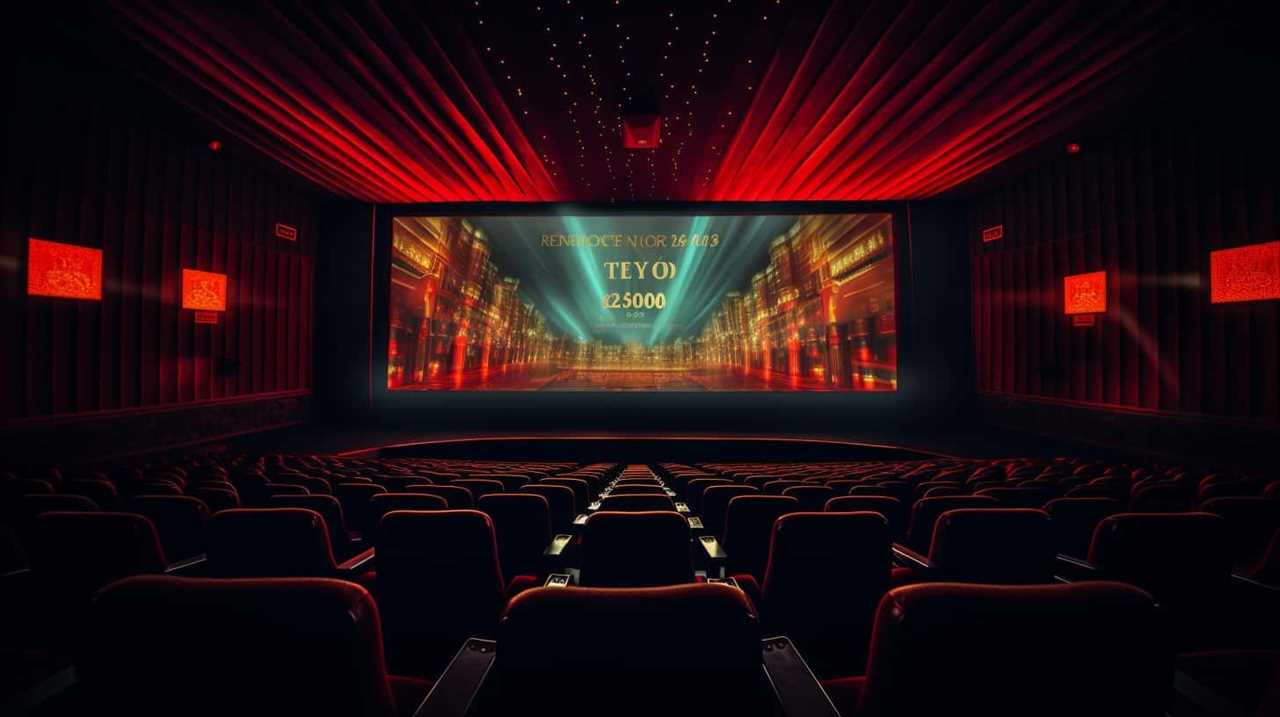
Here are four reasons why this line has resonated with audiences and evolved into an iconic reference:
- Instant Recognition: The line is instantly recognizable, showcasing the power of a well-crafted one-liner to capture the essence of a character or scene.
- Confidence and Triumph: The phrase exudes confidence, allowing viewers to vicariously experience a triumphant moment.
- Memorable Delivery: Leonardo DiCaprio’s enthusiastic delivery further adds to the impact, making it an unforgettable moment.
- Cultural Impact: ‘I’m the King of the World’ has transcended the film industry, becoming a catchphrase used in various contexts, showcasing the lasting impact of cultural references in films.
Now, let’s transition to discussing another iconic one-liner: ‘Get away from her, you b***h!’
Get Away From Her, You B***H!
One of our favorite defiant one-liners from iconic action movies is when Ripley, in the film Aliens, boldly exclaims, ‘Get away from her, you B***H!’ This line has become a cultural reference and holds significant cultural significance in the realm of action films. It represents the empowerment of female characters in a traditionally male-dominated genre, challenging gender stereotypes and showcasing the strength and resilience of women. Ripley’s fierce determination to protect and defend her loved ones resonates with audiences, inspiring a sense of liberation and empowerment. The line itself is a powerful declaration of defiance against a formidable enemy, showcasing Ripley’s unwavering courage and determination. It encapsulates the spirit of female empowerment, reminding us that women can be just as fierce and capable as their male counterparts in the world of action movies.
| Column 1 | Column 2 | Column 3 | Column 4 |
|---|---|---|---|
| Courage | Defiance | Empowerment | Strength |
| Resilience | Liberation | Determination | Gender stereotypes |
| Cultural reference | Female characters | Action movies | Gender equality |
This table evokes an emotional response by showcasing the powerful themes and concepts associated with Ripley’s iconic one-liner. It highlights the courage, defiance, and empowerment that the line represents, as well as the strength and resilience of female characters in action movies. It also addresses the cultural significance of this line, emphasizing its role in challenging gender stereotypes and promoting gender equality. Overall, the table enhances the understanding and appreciation of the line’s impact, inviting the audience to reflect on the empowering message it conveys.
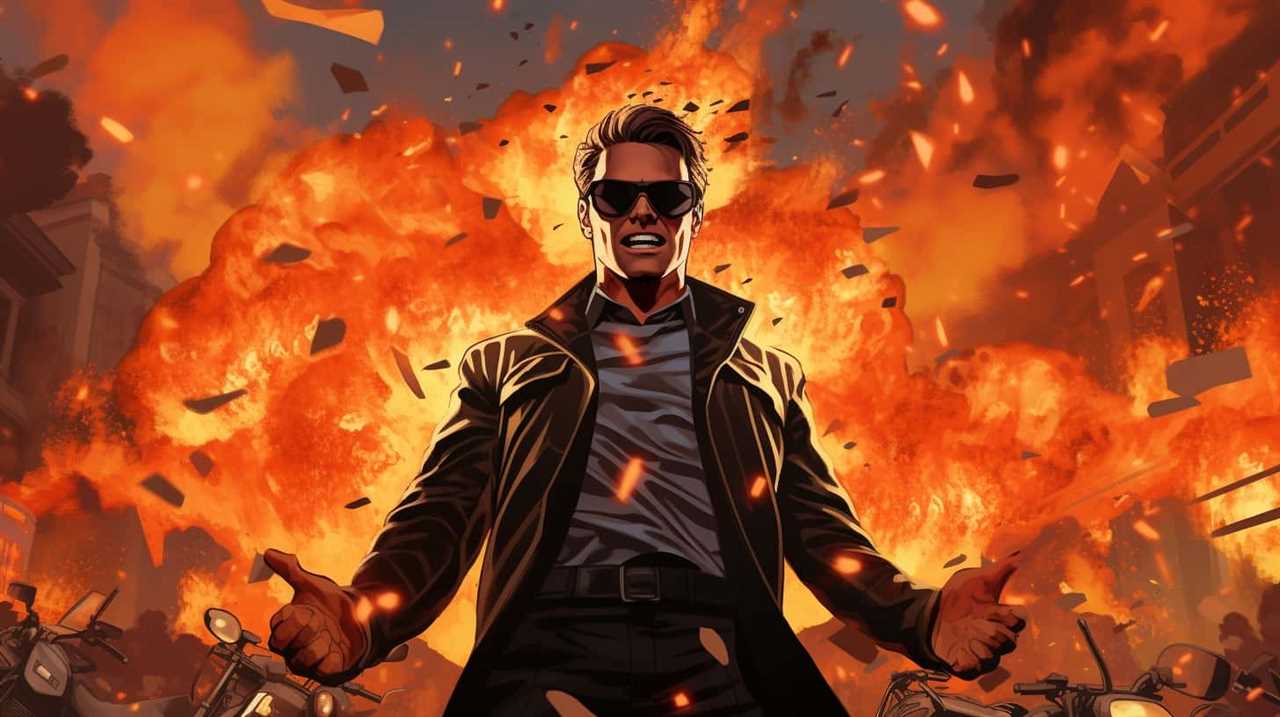
Frequently Asked Questions
What Movie Is the Line "I’ll Be Back" From?
The line "I’ll be back" is from the movie "The Terminator." Other famous lines associated with the film include "Hasta la vista, baby" and "Come with me if you want to live." The line has become a pop culture catchphrase due to its iconic delivery and the Terminator’s relentless determination.
Who Is the Actor That Famously Said "Yippee-Ki-Yay, Motherf****R"?
Yippee ki yay, motherf****r! That iconic line, made famous by Bruce Willis in the Die Hard series, is one of many defiant one-liners in action movies that captivate audiences with their raw intensity and unapologetic attitude.
What Is the Significance of the Line "Say Hello to My Little Friend"?
The line "say hello to my little friend" has become iconic in pop culture due to its memorable delivery and the character’s mindset. It reveals their determination, power, and willingness to use force.
Which Character Says "Go Ahead, Make My Day"?
In the realm of iconic action movies, one particular character boldly utters the famous line, "Go ahead, make my day." This line carries significant weight, both in its delivery and the impact it has on the audience.

What Is the Context Behind the Line "I’m Too Old for This S**T"?
What other lines are commonly used in action movies to express frustration or weariness? What are some other iconic one-liners from the movie where the line "I’m too old for this s**t" is used?
Conclusion
In conclusion, these iconic action movie one-liners have captured the hearts of audiences worldwide. They’ve become memorable phrases that continue to be quoted and referenced in popular culture.
Interestingly, a study conducted by MovieWeb found that the most popular one-liner among moviegoers is ‘I’ll Be Back,’ spoken by Arnold Schwarzenegger in the film ‘The Terminator.’ This statistic highlights the lasting impact of these defiant lines and the enduring popularity of action movies.
Lauren’s talent in writing is matched by her passion for storytelling. Her love for books and deep understanding of culture and entertainment add a distinct flavor to her work. As our media and press contact, Lauren skillfully bridges the gap between afterQuotes and the broader media landscape, bringing our message to a wider audience.





